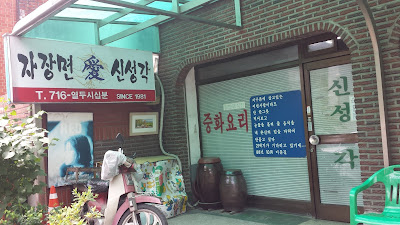Cascais is a quiet, slightly upscale seaside town where Lisboetas and foreigners alike head to soak up the sun during the overly hot Portuguese summers. It was early December, so not much sun for us, but we were heading to Mar do Inferno, so the lack of UV radiation didn't bother us too much.
As you know, when you have unbeatably fresh seafood, you should not mess around with it. Keep it simple, execute it well and season precisely. Mar do Inferno, which means 'Sea of Fire', knows how to do these three things exceptionally well. We got the seafood platter for two – whole seabass, tiger prawns and (godly) carabineiro (red, Portuguese spelling) prawns all grilled and lathered with high quality olive oil, salt and garlic, with some boiled new potatoes and broccoli thrown in.
You might be getting bored of me writing about red prawns but I am adamant that this crustacean is one of the best anythings on the planet, never mind just the best prawn. Sweet juicy flesh. Unctuous, creamy roe. And better-than-foie gras prawn Hepatopancreas (the unctuously gooey stuff inside the head) - well, that stuff lacks superlatives. Notice how I used to just call it prawn head fat, but now, I've decided to get a bit technical. The hepatopancreas of a Carabineiro prawn – words worth remembering.
Kind of blew away the tiger prawns, which were also excellent, by the way. The seabass was as fresh as expected but if I could find one criticism of our meal was that the fish was slightly overcooked – maybe the result of lying under a mound of piping hot prawns.
Their clams cooked 'bulhao pato' – that is with garlic, butter and parley – were also excellent, with the sweetness of the clams not dominated by the extrovert garlic, a balance is is easier said than done.
Now, you might be thinking, fresh seafood in a slightly upscale seaside town, especially including red prawns, equals expensive. But no – seafood platter for two, which in fact fed three, only 79 Euros, clams, 15 euros, and excellent wine, around 15 euros. Combine this with good service, great vistas of the Atlantic Coast mean that all in all it is pretty hard to fault this place, and definitely worth the small excursion out of Lisboa.
Address: Restaurante Mar do Inferno (Cascais e Estoril), Avenida Rei Humberto II Itália
2750-800 CASCAIS
Phone: +351 21 483 2218
Opening hours: Thurs – Tues 12.30 – 10.30pm
Closed Wednesdays
































